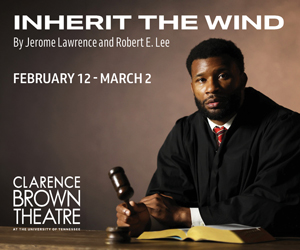While the concertmaster is clearly the leader within the orchestral ranks, principal oboe is a close second. It’s her “A” we tune to, after all. So when there’s an opportunity to hear the concertmaster and principal oboe as a duo, standing mere feet from one another instead of sitting myriad yards apart, it is, indeed, a rare treat.
Knoxville audiences will have that opportunity on April 3 and 4 at the Concertmaster Series, where KSO Concertmaster William Shaub and KSO Principal Oboe Claire Chenette will present J.S. Bach’s Concerto for Violin and Oboe, BWV 1060.
This dazzling duet is the perfect musical conversation. It has all the hallmarks of good marital banter – a balancing act between finishing each other’s sentences and allowing the other to fully have their say. Shaub and Chenette, both proven leaders in their own rights, will undoubtedly bring forth the true “meeting of equal minds” that Bach seems to have intended in this engaging work.
A note from history —
The work cataloged as BWV 1060 came down to us as a Concerto for Two Harpsichords in C minor dating from sometime between 1735 – 1740, years during Bach’s Leipzig days. Bach scholarship in the 19th Century proposed, however, that the concerto was, in fact, an arrangement by Bach himself of an earlier concerto, also in C minor, but for oboe and violin. The date of this earlier version is unknown as the manuscript has been lost, but is assumed to be between 1717 and 1723 while Bach was Kapellmeister at the princely court of Anhalt-Cöthen. There have been several reconstructions of the concerto with the assumed original instrumentation—the 1990 version of the accepted Bach catalog, Bach-Werke-Verzeichnis, added an “R” to the BWV 1060 to indicate this reconstruction.
Although there are plenty of examples of contemporary composers rearranging a score for different instrumentation, the practice was quite common in the 18th Century when composers might have to make adjustments to suit a new patronage situation.
In the opening Allegro, the soloists state the brilliant opening theme together. (But leave it to the oboe to appropriately punctuate the sentence.) At times, the instruments talk over one another, but there’s always the sense they are listening. There’s even a wonderful moment where the violin launches into virtuosic fireworks and the oboe calmly awaits her chance – the musical equivalent of patiently cooling one’s heels as your partner finds his car keys.
The Adagio is truly the music you might hope to hear in heaven. It’s as if Bach said with a wink, “Let me write the most beautiful vocal music imaginable and then hand it to a violinist and oboist. You decide who plays it better.” The intertwining thirds are both sensuous and heartbreaking.
The final Allegro is flashy, in the best sense of the word. With nothing left to prove, the two soloists are given the absolute freedom to ride this music into the sunset. It’s a glorious and rousing conclusion to the perfect musical dialogue, with both instruments getting the last word.
Bach’s music is not the most difficult music to play. But it may just be the most difficult music to play well. For musicians, it’s the absolute barometer of your self-worth as a both a technician and an interpreter. There is a reason many violinists perform unaccompanied Bach as an encore following a virtuosic violin concerto. It is so hard to play, but when played well, there’s simply nothing like it.
“William Shaub and Friends”
Knoxville Museum of Art, 1050 Worlds Fair Park Drive
• Johann Sebastian Bach: “Allegro” From Sonata No. 3 In E Major
• Eugene Ysaye: Solo Sonata No. 4
• Archangelo Corelli: La Folia (Variations On A Theme)
• Johann Sebastian Bach: Violin Concerto In A Minor
• Johann Sebastian Bach: Concerto For Violin And Oboe
William Shaub, violin; Kevin Class, piano; Claire Chenette, oboe
Wednesday, April 3, 2024, at 7:00 p.m. | TICKETS
Thursday, April 4, 2024, at 7:00 p.m. | TICKETS






